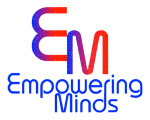Phonics
What is Phonics?
Phonics is a way of teaching children how read.
Here at Highwoods Academy we use Read, Write, Inc. to teach children the skills they need in order to become fluent and confident readers.
Read, Write, Inc. is a synthetic and systematic phonics scheme which means that we teach the sounds (phonemes) in relation to the letter (grapheme) and then focus on applying that knowledge to blend them together in order to read words. It also means that we teach the sounds in a particular order and build on knowledge of the sounds to develop reading.

How is Read, Write Inc. taught?
At Highwoods children begin Read, Write Inc. in Nursery and continue until Year Two. If children require access to phonics after this, they will continue to do so and possibly will receive targeted phonics interventions.
Children are assessed each half term and are placed into a coloured groups based on their ability to identify sounds and to read words (real and nonsense). Once children are placed into the correct group by the phonics leader (Miss Marsh) they attend Phonics sessions each day with an experienced and knowledgeable member of staff.

Who is ‘Fred’?
Fred is well known at Highwoods, he helps children learn their phonics every day. Fred is used to ‘Fred-talk’ words to the children in order to support them in identifying sounds and focus on their blending skills. Fred can only say the sounds in words. For example, Fred will say 'c-a-t' and the children will blend the sounds and say 'cat'.

What are the sounds my child will learn?
Read, Write, Inc. has three sets of sounds (Set 1, 2 and 3).
Set 1 begins with single sounds (a-z) and ‘special friends’ (two letters that make one sound ,e g. 'sh' ).
Set 2 introduces more special friends (e.g. 'ay', 'ee', 'igh').
Set 3 is the final set of sounds taught and introduces more special friends (e.g 'aw', 'ure') as well as chatty friends (e.g a-e, i-e).
In order to help the children remember the sound each one has a matching rhyme (for example, 'ay' - ‘May I play?’) and an image.


In order to help the children remember the sound each one has a matching rhyme (for example, 'ay' - ‘May I play?’) and an image.

During phonics children also learn to read common exception words (red words) these are words that cannot be read by applying phonics, so the children learn to read them on sight.
Red Words
How can I help my child at home?
Your child will bring home a Phonics reading book, the book is carefully matched to your child’s reading ability and includes only sounds that they have been taught.
Children should apply their phonics to read the book at home. Encourage your children to read as much as possible. As well as reading their phonics book children may also be encouraged to read other texts at home.
When reading with your child use the phonics sounds to segment the words and blend them back together (e.g. sh-i-p = ship, s-l-ee-p = sleep).
Your child should also bring home a ‘My phonics sound booklet’, practice the sounds in the booklet with your child.
Read to your child at home, explore different types of texts together, and make reading a fun and enjoyable experience full of adventure.
Ask your children questions about the text to develop their understanding.
Practice reading ‘red words’ at home - use the red words PDF document above
Access useful sites such as:
- www.phonicsplay.com
- Bug Club - ActiveLearn: Login (activelearnprimary.co.uk)



What is the Phonics Screening Check?
The Phonics screening check is completed in Year One in June.
It is a one-to-one test that children take to assess their reading skills (decoding).
Children are asked to read 40 words (20 real words and 20 nonsense words).
The check ensures that children are able to apply their phonics skills and read accurately. If children do not pass the Phonics Screening check this indicates that they require extra support or intervention and they will retake the check in Year Two.
The check takes around 10 minutes to complete and is a familiar and usually an enjoyable activity for the children to complete with a well-known adult in school.
The results of the phonics reading check are shared with parents
Where can I find more information?
- Speak to your child's class teacher
- Speak to the Phonics leader in school - Miss Marsh
Links to websites with more information about Phonics and Early Reading


